External links
- Official website (in English and Polish)
Coordinates: 52°14′16″N21°01′06″E / 52.237778°N 21.018333°E
The Institute for the History of Science was established in 1954 as an institution of the Polish Academy of Sciences in Poland.
The Institute is located in the Staszic Palace in the center of Warsaw, near the Copernicus monument. Among its founders were professors: Bogdan Suchodolski and Aleksander Birkenmajer. In the mid 1970s, it was renamed to the Institute for the History of Science, Education and Technology. Since 1994, the name has been shortened to the Institute for the History of Science, but with its previous research scope. The head of its present Academic Council is Leszek Zasztowt. Since 2011 the Institute has taken the official name of Ludwik Birkenmajer and Aleksander Birkenmajer: L & A Birkenmajer Institute for the History of Science (Polish: Instytut Historii Nauki PAN imienia Ludwika i Aleksandra Birkenmajerów).
The Institute consists of two departments: the Department of the History of Social Sciences, History of Education and Scholarly Institutions (Sections: History of Social Sciences, History of Education, History of Scientific Organizations), and the Department of the History of Exact Sciences, Natural Sciences and Technology (Sections: History of Exact Sciences and Technology, History of Medicine, History of Chemistry and Pharmacy, History of Mathematics).
The Institute conducts research focused on the history of science, both humanities and social sciences as well as natural and exact sciences, and the history of technology. The history of culture and history of education and pedagogical thought are also main research fields, equally with the history of ideas and its philosophical milieu.
Coordinates: 52°14′16″N21°01′06″E / 52.237778°N 21.018333°E

Grudziądz is a city in northern Poland, with 92,552 inhabitants (2021). Located on the Vistula River, it lies within the Kuyavian-Pomeranian Voivodeship and is the fourth-largest city in its province. The Old Town of Grudziądz and 14th-century granaries were declared National Historic Monuments of Poland.

The Polish Academy of Sciences is a Polish state-sponsored institution of higher learning. Headquartered in Warsaw, it is responsible for spearheading the development of science across the country by a society of distinguished scholars and a network of research institutes. It was established in 1951, during the early period of the Polish People's Republic following World War II.
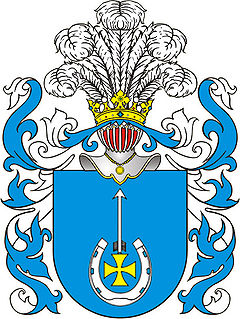
Chołodecki is the Polish surname of one of the noble (szlachta) families. It is derived from the village of Chołodec located in Wołyń, currently located in the Ukraine.
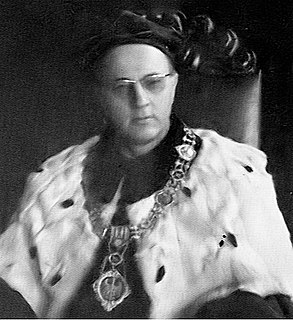
Gerard Labuda was a Polish historian whose main fields of interest were the Middle Ages and the Western Slavs. He was born in Kashubia. He lived and died in Poznań, Poland.
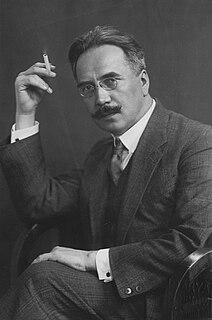
Stanisław Kot was a Polish historian and politician. A native of the Austrian partition of Poland, he was attracted to the cause of Polish independence early in life. As a professor of the Jagiellonian University (1920–1933), he held the chair of the History of Culture. His principal expertise was in the politics, ideologies, education, and literature of the 16th- and 17th-century Polish–Lithuanian Commonwealth. He is particularly known for his contributions to the study of the Reformation in Poland.

Karol Podczaszyński was a Polish-Lithuanian leading Vilnius architect, a representative of the neoclassical architecture and a professor of the Vilnius University, as well as one of the pioneers of industrial design.
Ryszard Engelking is a Polish mathematician. He was working mainly on general topology and dimension theory. He is author of several influential monographs in this field. The 1989 edition of his General Topology is nowadays a standard reference for topology.

Czesław Wycech (1899–1977) was a Polish activist, politician and historian. He was a member of the Polish peasant's parties: the Polish People's Party "Wyzwolenie", the People's Party, the Polish People's Party, and the United People's Party. During World War II he was a member of the Polish Underground State, responsible for organizing underground education. He was the Minister of Education in the Council of National Unity (1945–1947). Within the People's Republic of Poland, he was a member of the Polish parliament (Sejm) and also held other governmental posts.
Adam Redzik is a Polish lawyer and historian, a professor at the Warsaw University. He specializes in the history of law and science.
Stanisław Salmonowicz is a Polish historian, professor of the Nicolaus Copernicus University in Toruń, and a member of the Polish Academy of Learning and History Institute of the Polish Academy of Sciences.
Chemik Polski was the first Polish scientific journal of chemistry. It was published weekly, and later bi-weekly, in the years 1901-1918 by the Chemistry Section of the Warsaw Branch of the Russian Society for the Promotion of Industry and Commerce and covered all branches of theoretical and applied chemistry. The journal was published in Warsaw, initially by J. Leski, and from 1908 by Boleslaw Miklaszewski. The founder and editor in chief was Bronislaw Znatowicz. Contributors included Marie Curie and Wojciech Świętosławski.
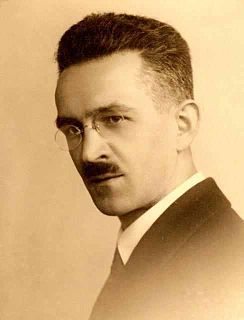
Aleksander Ludwik Birkenmajer was a Polish historian of exact sciences and philosophy, bibliologist, professor of the Jagiellonian University in Kraków and of the Warsaw University.
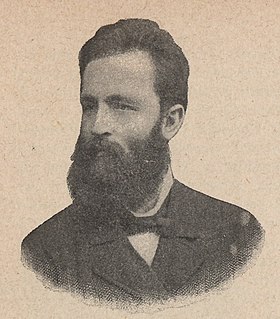
Ludwik Antoni Birkenmajer, Polish historian of science, physicist, astronomer, professor of the Jagiellonian University.
Jan Mączyński was a Polish humanist and lexicographer. He was appointed as canon of the Collegiate church in Kalisz. Mączyński was the author of a Polish-Latin Dictionary published around 1564 with 1000 pages and 20,500 Latin terms, including idioms and jargon, and their Polish equivalents.
Śląski Kwartalnik Historyczny Sobótka is a peer-reviewed academic journal published by Wrocławskie Towarzystwo Miłośników Historii. It was established in 1946. The founder and the first editor-in-chief was Antoni Knot.
Leszek Zasztowt is a Polish historian and professor at the University of Warsaw.

Tadeusz Figiel is a Polish mathematician specializing in functional analysis.

Mieczysław Jan Gębarowicz was a Polish art historian, soldier, dissident, museum director and custodian of cultural heritage.
Paweł Sękowski is a Polish historian specializing in modern history, researcher at the Jagiellonian University, President of the Kuźnica Association from January 2018.